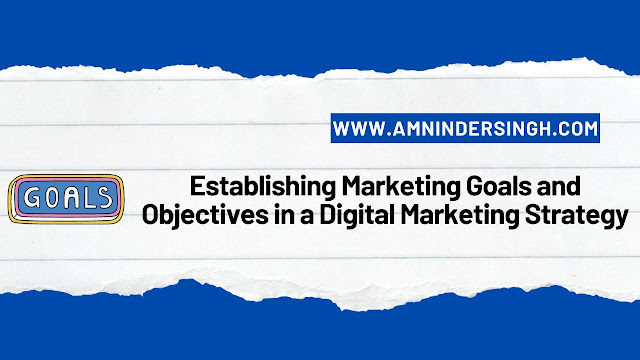In the rapidly evolving world of digital marketing, setting clear and achievable goals and objectives is the foundation of a successful strategy.
Without well-defined aims, your digital marketing efforts can lack direction and impact.
In this article, we’ll explore the importance of establishing marketing goals and objectives in a digital marketing strategy and provide insights into how to do it effectively.
Why Set Marketing Goals and Objectives?
Clarity and Focus: Goals and objectives provide clarity about what your digital marketing efforts should achieve.
They serve as a roadmap, ensuring that every action you take aligns with your overarching mission.
Measurability: Goals and objectives are quantifiable, allowing you to measure progress and success. This data-driven approach enables you to adapt and refine your strategy based on performance metrics.
Motivation: Well-defined goals and objectives inspire motivation and accountability among your marketing team. When everyone knows what they’re working toward, it fosters a sense of purpose.
Alignment with Business Goals: Digital marketing goals should align with broader business objectives. When your marketing efforts contribute directly to achieving these goals, your strategy becomes an integral part of your business’s success.
Establishing Marketing Goals
1. Start with Business Goals
Begin by understanding your organization’s overall objectives. What is your business trying to achieve in the short and long term?
Examples of common business goals include increasing revenue, expanding market share, or launching a new product.
2. Specificity Is Key
Transform broad business goals into specific marketing goals. Instead of “increase revenue,” set a goal like “increase online sales revenue by 20% in the next fiscal year.”
Specific goals provide clarity and leave no room for ambiguity.
3. Make Goals Measurable
Ensure that your marketing goals are measurable. For instance, use key performance indicators (KPIs) such as website traffic, conversion rates, or social media engagement to quantify progress.
4. Set Achievable Goals
While ambition is commendable, set goals that are realistic and attainable within your resources and timeframe. Unrealistic goals can lead to frustration and burnout.
Make sure you calculate this in terms of resources you have. If you have resources only then you can achieve a goal.
5. Time-Bound Goals
Assign a deadline to your marketing goals. Having a timeframe creates a sense of urgency and helps prioritize tasks.
Establishing Marketing Objectives
Marketing objectives are the specific strategies and tactics you’ll implement to achieve your goals. They break down your goals into actionable steps.
1. Choose Relevant Channels
Identify the digital marketing channels and platforms that align with your goals. For example, if your goal is to increase brand awareness, social media and content marketing may be relevant.
2. Define Target Audiences
Clearly define your target audience for each objective. Understanding your audience’s demographics, interests, and pain points allows you to tailor your messaging effectively.
3. Create Content and Campaigns
Develop content and campaigns that resonate with your audience and align with your objectives. This may include blog posts, social media ads, email marketing, or SEO strategies.
4. Allocate Resources
Allocate the necessary resources, including budget, staff, and tools, to execute your marketing objectives effectively.
5. Monitor and Adjust
Constantly monitor the performance of your marketing objectives. Analyze data and adjust your tactics as needed to stay on track and meet your goals.
Establishing Marketing Goals and Objectives : Conclusion
Establishing marketing goals and objectives in a digital marketing strategy is not just a preliminary step; it’s an ongoing process.
It’s about setting a clear direction, monitoring progress, and adapting to changes in the digital landscape and consumer behavior.
By following this structured approach, your digital marketing strategy will become a dynamic and effective tool for achieving your business’s long-term success/
Remember that flexibility and data-driven decision-making are key to refining and optimizing your strategy as you work toward your marketing goals and objectives.
This article is a part of our Digital Marketing Strategy Series
Digital Marketing Strategy
Establishing Marketing Goals and Objectives
Identifying the Target Audience and Creating Buyer Personas
Analyzing Competitors and the Competitive Landscape
Constructing a Comprehensive Digital Marketing Plan
Financial Planning and Resource Allocation

